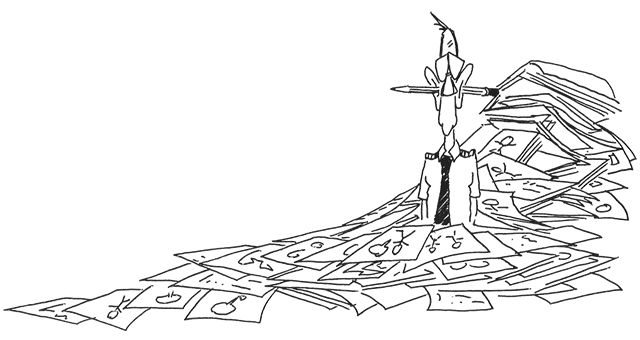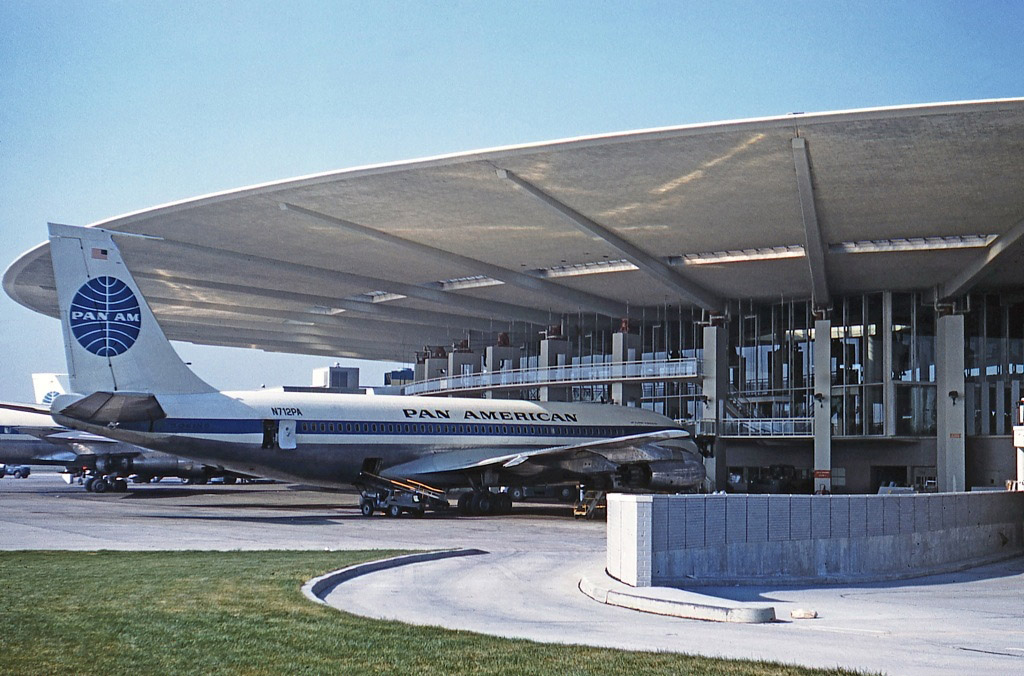Taken in isolation, this accident is simply the case of a poorly trained first officer failing to pay attention and not having the necessary training to recover from an unusual attitude. But there is much more to it than that. This was another incident in a series of 13, 11 of which pointed to a problem with the Crew Resource Management culture at Pan American World Airways at the time. They were able to reverse this culture and became one of the safest airlines in the world.
— James Albright

Updated:
2018-02-15
The crew made a mistake in the cockpit set up (they left the Mach Trim switch off), and the copilot appeared to have caused the situation by inadvertently disengaging the autopilot without noticing it and then failing to recover from the resulting unusual attitude. But from that point on, the Captain and the rest of the cockpit team worked very well together to save the airplane, crew, and passengers. The aircraft was eventually returned to service.
So, outside of an inept first officer, what's the problem? I think when you have a culture that beats first officers into nothing more than checklist readers, you get first officers capable of little else. There was much to be learned from this incident, the first of many, but the pilot culture at the airline would have blinded them to the possible lessons. To learn more about this culture, see: Crew Resource Management. There are lessons that still apply today.

1
Accident report
- Date: 3 February 1959
- Time: 22:05
- Type: Boeing 707-121
- Operator: Pan American World Airways
- Registration: N712PA
- Fatalities: 0 of 10 crew, 0 of 119 passengers
- Aircraft fate: Repaired
- Phase: En route
- Airport (departure): London Heathrow Airport (EGLL), United Kingdom
- Airport (arrival): Gander Airport, Newfoundland (CYQX), Canada
2
Narrative
- At approximately 2150, Captain Lynch [pilot] went to the main cabin, Captain Peters [copilot] remained in the cockpit, seated in the copilot's seat. The aircraft was in maximum cruise configuration flying at Mach 0.82 in smooth air; autopilot was engaged in the manual mode and the altitude hold was on; gross weight was between 190,000 pounds and 195,000 pounds; and outside air temperature was minus 55 degrees centigrade, The aircraft position was 52.5 degrees north latitude 40.5 degrees west longitude.
- At approximately 2200 the navigator posted a change in heading requiring a left turn of about 20 degrees. Captain Peters complied, using the turn knob of the autopilot in so doing. He said that he observed the new heading on his RMI (radio magnetic indicator) for several seconds and that the autopilot was holding the heading in a normal manner. He then began to work on the "How Goes It" curve attached to a clipboard resting on his lap, which necessitated computations being made as to time, distance, cruising speed, and fuel consumption, some parts of which are computed by the navigator. During this time his headset was positioned on both ears as he was waiting to copy the 2205 Gander weather broadcast, and he said he did not observe the forward instrument panel during this time.
Source: CAB Report, pp. 2 - 4
The early KC-135As had a similar autopilot; lateral navigation was little more than a wing leveler and vertical navigation was little more than altitude hold. The turn knob simply banked the aircraft until it was centered.
- The first indications he had that the flight was not proceeding normally was when he felt the aircraft buffet. This was immediately followed by a feeling that positive acceleration forces were building up rapidly. The buffeting increased in intensity and his instrument panel lights went out. Quickly he looked at the captain's instrument panel which remained lighted and saw that the captain's artificial horizon had tumbled and consequently was of no use to him. He then glanced up and saw the stars moving rapidly counterclockwise, indicating that the aircraft was in a nose-down right spiral about to roll over on its back. At this point he grabbed the control wheel, pushed the autopilot release button, and attempted to stop the roll by applying left aileron and rudder, but by this time he was virtually immobilized physically by the pressures created during the maneuver. Various system-warning and fire-warning lights were being activated intermittently and the Mach warning bell was heard.
Source: CAB Report, pp. 2 - 4
I find the "immobilized physically" hard to believe, in that the report also states the first officer was strapped in and that the captain was able to return to the cockpit. A far more plausible explanation would be that the first officer was immobilized by panic.
- At this time Captain Lynch with considerable difficulty returned to his seat. As he passed the flight engineer, Mr. Sinski reminded him that the power was still at cruise thrust. The captain pulled the power levers to idle position and pulled himself into his seat, which had been moved fully rearward when he left it. His normal seat position when flying is full forward, rudder pedals in the full aft position. Mr. Mackey and Mr. Laird, the navigator, had changed seats and the captain asked Mr. Laird, who was now immediately behind him, to hold him in his seat. Everyone in the cockpit was seriously affected by the G forces which made it difficult or impossible to move properly their heads, hands, or feet. Captain Lynch said that his head was bent over and his feet seemed pinned to the floor.
Source: CAB Report, pp. 2 - 4
The downward spiral and the description of how the G-forces were experienced leads us to believe the G-forces were positive.
- A quick glance at his instruments showed the airspeed needle in the vacant area to the right near the zero mark, and the altimeter passing through 17,000 feet with the needle turning at a terrific rate. He could not see the Mach meter because it was hidden by the control wheel and he could not lift his head. The artificial horizon was of no use to him because it had tumbled, and the turn and bank indicator was full to the right with the ball positioned slightly to the left of center. He quickly glanced at Copilot Peters and seeing him struggling with the controls shouted, "I have command." The stabilizer was in the full nose-down position and his electric trim button failed to function.
Source: CAB Report, pp. 2 - 4
With the stabilizer full nose down the spiral would have to have been incredibly tight to produce positive G forces. The failure of the electric trim would be normal if there were considerable pressures on the yoke fore or aft.
- Visual reference was impossible because they were in a cloud, Mr. Laird somehow managed to fasten the captain's safety belt and while this was being done Captain Lynch rolled the wings level and the G forces were relieved. The flight engineer, now able to move, immediately pulled the circuit breaker which deactivated the stabilizer system and then straddled the console and began rolling both stabilizer wheels toward the up position by hand.
Source: CAB Report, pp. 2 - 4
This looks like very good crew coordination between the captain and flight engineer.
- As they passed through 8,000 feet Captain Lynch pulled the yoke back with a steady pull. At 6,000 feet there was a terrific violent pounding or buffeting which lasted a couple of seconds and then the aircraft ceased to descend and began a fairly steep climb. At 9,000 feet the wings were level and the aircraft was in a moderate climb. About this time the captain asked Flight Engineer Sinski to roll the stabilizer a bit forward and with the aircraft responding reasonably well to control demands he realized he had once again regained positive control. He then moved the horizon switch to the No. 2 position, selecting the No. 2 vertical gyro, and his artificial horizon responded normally; however, when returned to the No, l position his horizon registered normal pitch movements, but depicted a steep bank. Captain Lynch noticed that the stabilizer cutout switch was in the on position and that the Mach trim switch was in the off position. After determining their position the flight immediately advised Gander OAC of the difficulty and a cruise altitude of 31,000 feet was obtained for the remainder of the trip.
- On arrival at Gander the aircraft was carefully examined and it was determined that although it had sustained extensive structural damage it could, with minor repairs, be flown safely to the Boeing plant at Seattle, Washington, for final repair.
Source: CAB Report, pp. 2 - 4
The report says data from the flight data recorder tape had been exhausted prior to the event and very little useful data was available. The report later goes on to discount much of the crew's testimony.
3
Analysis
- On several previous flights of B-707 aircraft there have been disengagements of the autopilot without the existence of a mechanical failure and after which the system functioned normally when the autopilot was reengaged. One such disengagement occurred on the immediately preceding flight of the subject aircraft. On this occasion the warning light failed to come on and the crew became aware of the disengagement by observing a 20-degree right-wing-low attitude on the horizon indicator. Before recovery was effected approximately 600 feet in altitude was lost. The warning light was checked by the crew immediately after the occurrence and it did not light.
- The Mach trim system on the Boeing 707 is designed to aid in providing longitudinal stability during manual flight at high speeds. This is accomplished by adjusting the position of the movable horizontal stabilizer to counteract the aircraft-nose-down tendency at speeds of Mach 0.84 or above. This nose down tendency at high speeds, or "tuck under" as it is sometimes called, is a flight condition pertinent to all high-speed swept-wing aircraft. Although the B-707 aircraft is designed to be controllable throughout the Mach trim range without the operation of this system, it is however, required by Civil Air Regulations. The Mach trim system was tested and found to be operating in a normal manner. The Mach trim switch is turned on as a part of the after-takeoff checklist; the crew testified that they believed this was done on departure from London.
- From all of the available evidence it appears that during the captain's absence from the cockpit the autopilot disengaged and the copilot did not detect that the aircraft had entered a steep nose-down right spiral. It is further evident that it entered this maneuver gradually without any abrupt movements. Also, since the accident was during the hours of darkness, the autopilot disengage warning light (a flashing red light) should have been observed by the crew unless it either failed or was almost completely shielded by the dimming cap. The latter appears probable as the cap was found in the full dim position at Gander.
- Functional tests performed on the Mach trim system disclosed that it was capable of normal operation. It must be concluded that it had not been turned on by the crew, otherwise it would have provided increasingly more nose-up stabilizer trim action with increase in Mach number.
- The crew reported a change in stabilizer trim to full nose-down. This did not result from a malfunction of the Mach trim system but could have resulted from inadvertent pressure upon the electric stabilizer trim switch located on the control wheel. Although Captain Peters testified that he is quite certain his hand did not touch the switch it remains, after careful consideration, the only logical explanation for the trim system behavior. It is not definitely known what caused Captain Lynch's electric stabilizer switch to not function when he attempted to use it after returning to his seat. It may have been caused by clutch slippage induced by high aerodynamic loads. In any event, it functioned in a normal manner when tested later.
Source: CAB Report, pp. 4 - 7
4
Cause
The CAB makes several assumptions contrary to crew testimony, but these seem to be logical given the rest of the evidence. You could rewrite their findings to say the copilot was inept. I would go one step further to say the culture at Pan American World Airways beat their copilots into being little more than passengers in the right seat. Pilots with such attitudes are not as deliberate and often too timid to aggressively fly the aircraft when called upon to do so.
The Board determines that the probable cause of this accident was the inattention of the copilot to the progress of the flight, during the absence of the captain from the cockpit, following the involuntary disengagement of the autopilot. Contributing factors were the autopilot disengage warning light in the dim position and the Mach trim switch in the "off" position.
Source: CAB Report, p. 9
References
(Source material)
Civil Aeronautics Board (CAB) Aircraft Accident Report, Pan American World Airways Boeing 707, N712PA, Over the Atlantic between London, England, and Gander, Newfoundland, February 3, 1959, Released November 3, 1959
